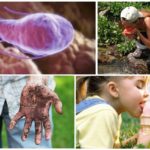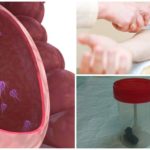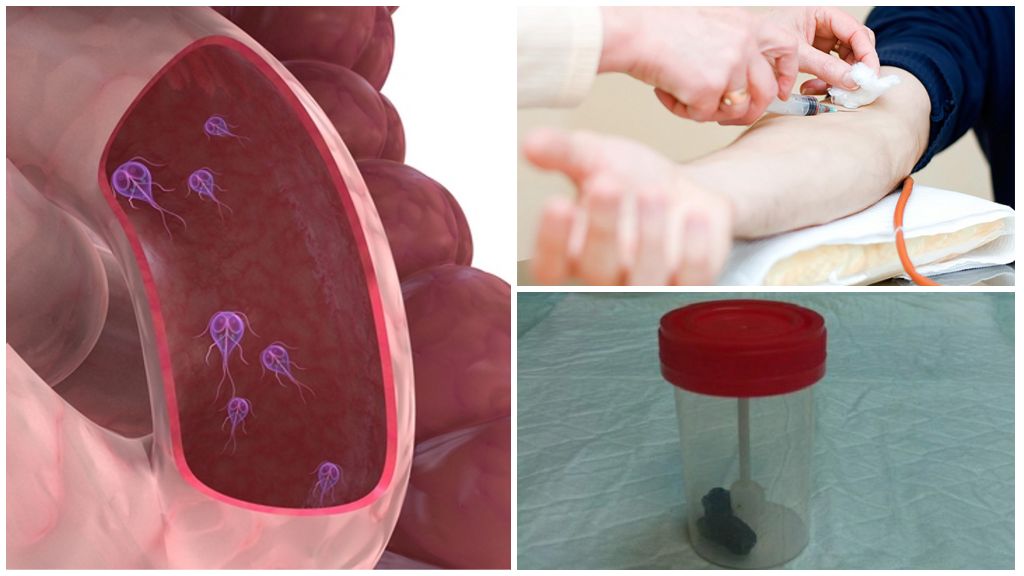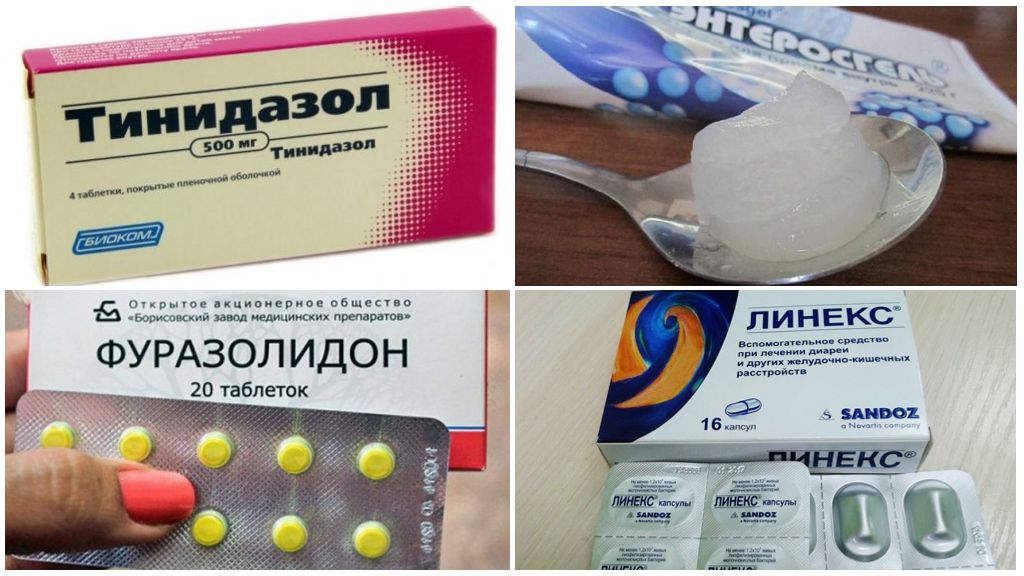Giardia cysts in the feces of a child: how they look and how to treat
Content
- Causes of Giardia Infection
- Diagnosis Giardia
- Lamblia treatment
Among the common parasitic diseases in children is giardiasis. Infection occurs after the colonization of the organism by unicellular microorganisms - Giardia. The disease is difficult to diagnose,causes serious dysfunction of the internal organs. Comprehensive treatment of cyst Giardia in the feces of a child prevents dangerous complications and the effects of the disease.
What are parasites
Living adult giardia are single-celled microorganisms (trophozoites) up to 18–20 microns in size. Their torso is drop-shaped with two pairs of motile flagella. Outside on the ventral side there is a powerful sucker, inside the body cavity there are two cores. Trophozoites are viable exclusively under anaerobic (oxygen-free) conditions. In the environment, they die within 30-60 minutes.
Trophozoites parasitize in the small intestine, where they actively feed on solutes, multiply many times. Every 15–20 minutes, two trophozoites are formed from one individual by longitudinal division. Some of them migrate to the large intestine. Here they are rounded, covered with a dense two-layer shell. An inactive spore-shaped form of the life cycle of Giardia is formed - dual-core cysts. They are the main source of infection and spread of giardiasis.
On a note!
Infection of the child begins with the ingestion of cysts, which in the intestine lose their shell.Two trophozoites emerge from each spore. In a healthy body, parasites are destroyed by phagocytes. Giardia cysts in children with a weakened immune system cause giardiasis.
Causes of infection
Giardia can parasitize infinitely long in the body of a sick person. Cysts and part of the trophozoite are regularly removed to the environment with feces. Live parasites soon die, but spores retain invasive properties for 3–4 months (more than 6 months in water).
Causes of cymbal Giardia in the feces of children are infection in one of the possible ways:
- oral-fecal cysts and trophozoites from feces contaminate the soil, water bodies, are swallowed in violation of sanitary and hygienic norms;
- household contact - infection through unwashed hands, fruit, toys, dishes, furniture, clothes, pets, on the surface of which there are cysts;
- water - when visiting public pools, open reservoirs, the use of unboiled contaminated tap or spring water.
Important!
The probability of infection with giardiasis increases in young children attending preschool institutions.The use of common cutlery, hygiene items, bedding contributes to the mass destruction of children in groups. An indirect sign of the development of giardiasis is the detection of cyst Giardia in the feces of a child.
When diagnosis is necessary
Swallowed cysts in the intestines of children after 20-30 minutes are transformed into trophozoites. They are attached to the mucous wall and feed on the child’s body. At this stage, the disease is accompanied by signs of food poisoning (vomiting, diarrhea, abdominal pain, colic, skin rash).
When going into a chronic stage, symptoms of fatigue and fatigue appear. The kid is naughty, loses appetite and weight. When alarms appear, it is recommended that children be examined by a specialist, who determines the treatment scheme and tactics.
On a note!
Timely detection of giardiasis in children prevents the development of complications. The growth of colonies leads to infection of other organs - the liver, bile ducts, respiratory organs, heart.
Identification methods
Treatment of giardiasis in children begins only after the discovery and accurate identification of giardia.Diagnosis is based on clinical examination and laboratory tests. Symptoms of giardiasis are most often masked as other chronic diseases. For this reason, instrumental studies of biological material are the most informative.
How do lamblia in the feces of a child
Due to the microscopic size, it is impossible to see the Giardia in the feces with the naked eye. Laboratory examination is carried out by different methods:
- microscopy - viewing of fecal smears in the field of view of an optical light microscope;
- analysis of feces PCR (polymer chain reaction) is the most accurate molecular method;
- enzyme immunoassay - the presence of specific antibodies on Giardia;
- duodenal analysis - collection of bile from the bile duct or duodenum.
Important!
It is impossible to diagnose giardiasis by the color of feces in a child. The choice of a specific method of examination depends on the age, general condition of the child. An integrated approach allows to diagnose giardiasis with a high degree of accuracy.
Benefits of microscopy
This is a universal method of primary diagnosis of cyst Giardia in feces in children. For this purpose, fresh fecal masses are investigated (no more than 30-60 minutes after a stool). In this case, cysts and live trophozoites can be detected. Certain skills and experience are necessary for their visualization and identification. The parasite has a microscopic size, translucent structure, easily masked as food debris. The photo of cyanus lamblia in Calais clearly demonstrates the features of their appearance and structure.
On a note!
Microscopic examination of fecal masses is a simple and convenient method for the diagnosis of giardiasis in children under 10 years of age. Since cysts are formed cyclically, you will need to take the feces at least three times with different frequency. The accuracy of diagnosis increases with the proper delivery of the material (in the early morning, in a sterile container).
Features of treatment
Detection of cysts in the feces most often indicates that the body is infected with parasites. The need and treatment program is determined by the attending physician.
The general scheme of therapy in children:
| Stage and goal | Drugs |
|---|---|
| Preparatory: improvement of the intestinal functionality, preparation for medication effects. | Enterosgel, Smecta, their analogues, activated carbon |
| Antiparasitic: suppression of activity, viability of parasites. | Medicines based on Metronidazole, Albendazole, Furazolidone, Tinidazole |
| Restorative: strengthening the immune system, the regeneration of the digestive tract. | Acceptance of eubiotics, probiotics, vitamin complexes. |
Important!
The therapeutic scheme is adjusted depending on the child's age, body weight, associated diseases, and the general condition of the body.
Diet and traditional medicine
An important role in the treatment of giardiasis in children is played by a proper diet. When cysts are found in the feces of a child, treatment begins with proper nutrition. Carbohydrates, which are replaced with products with antiparasitic effect, are excluded from the diet as much as possible. These include pumpkin seeds, dried fruits, sour berries.
Means of traditional medicine are used as auxiliary methods - decoctions, tinctures of dandelion roots, aspen bark, and plantain leaves. Their use in children is consistent with the pediatrician and the attending physician in order to avoid negative side effects.











